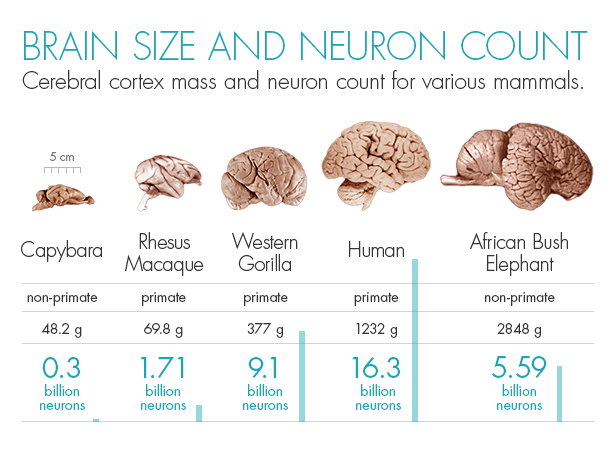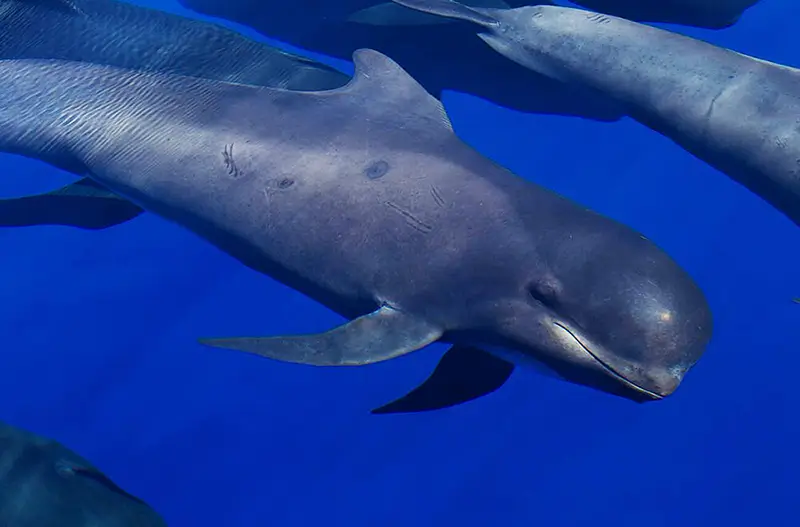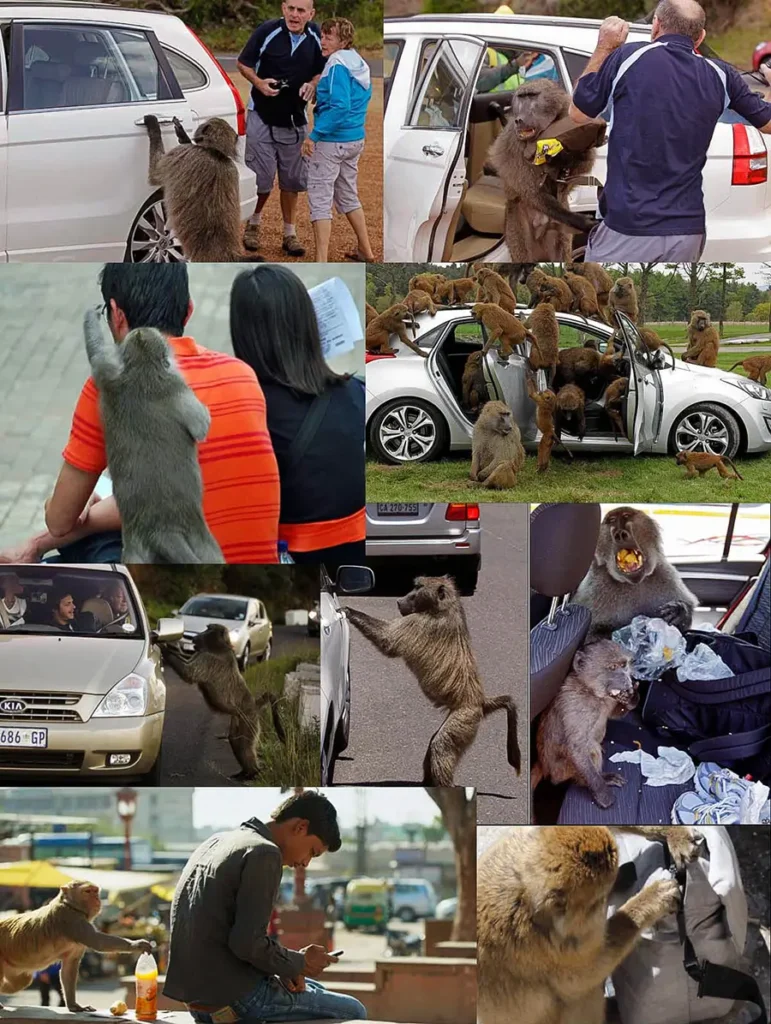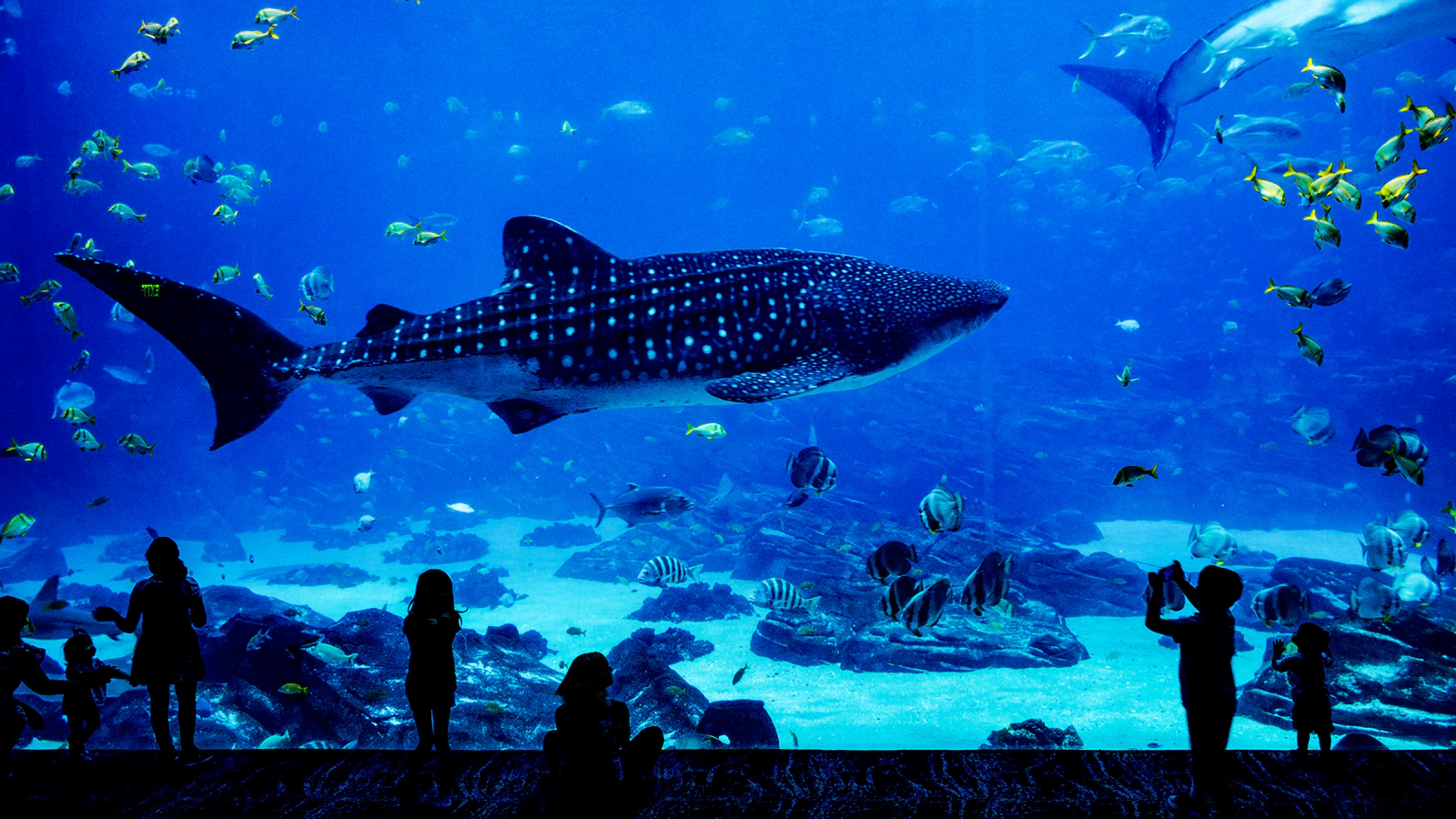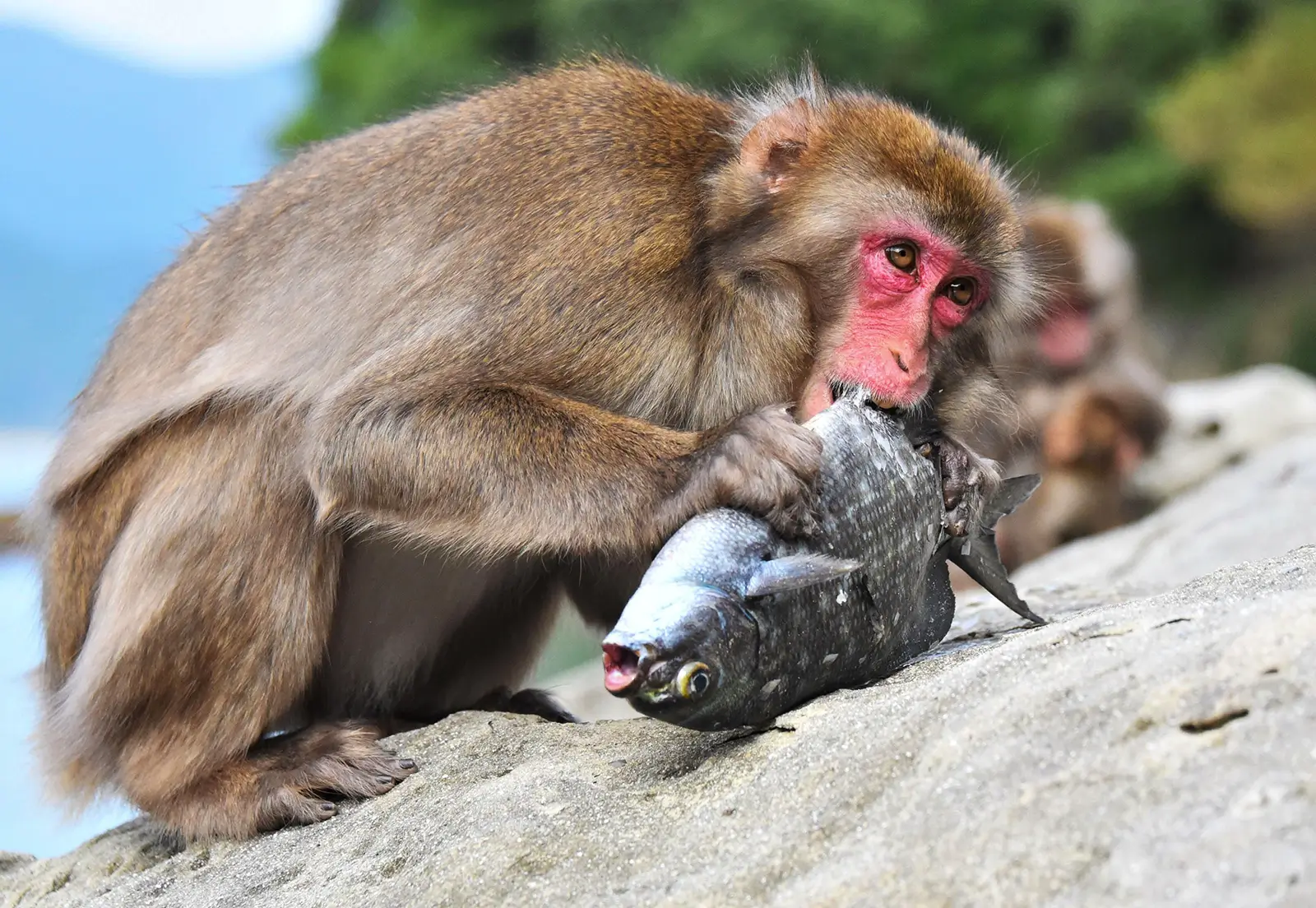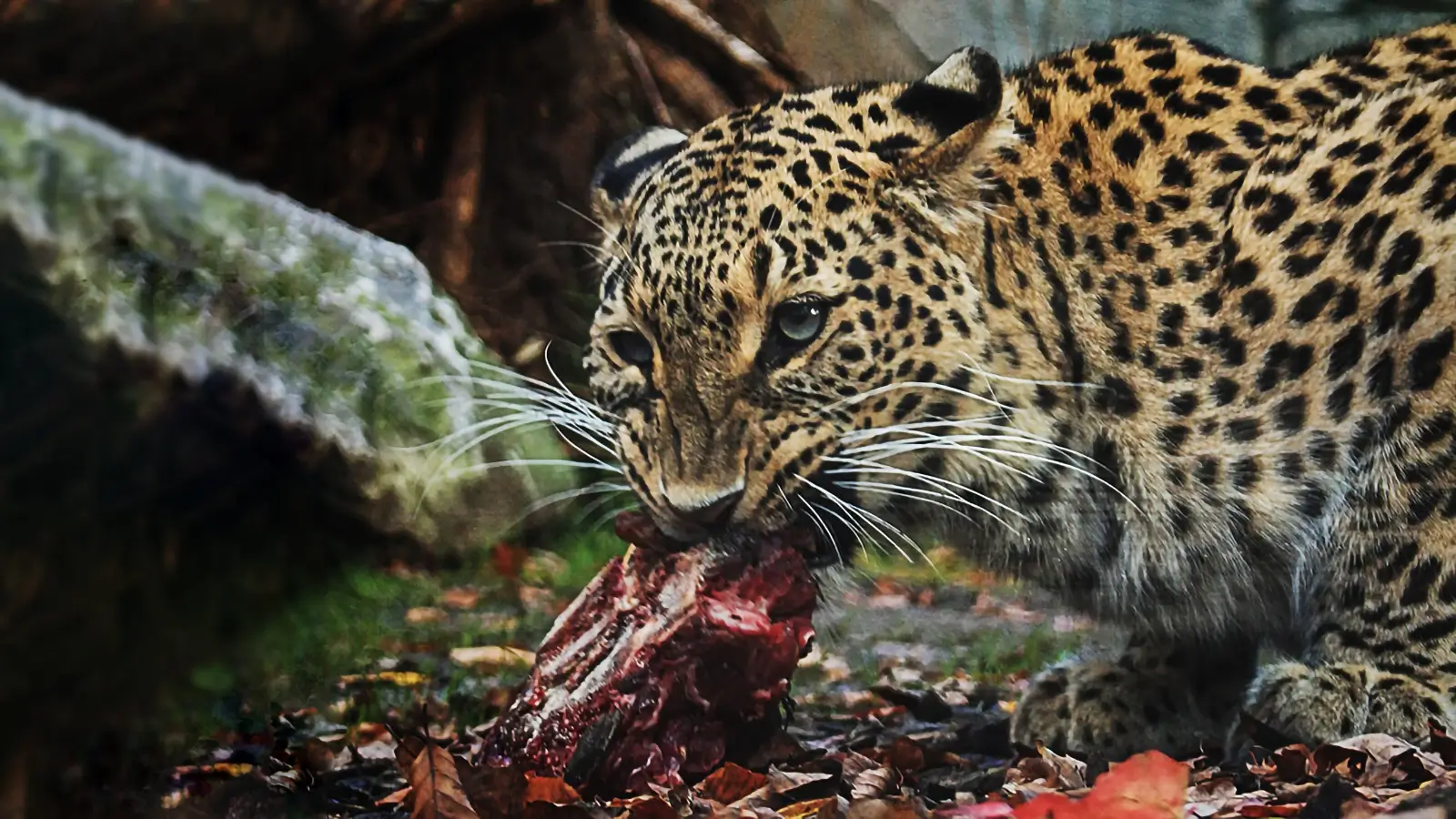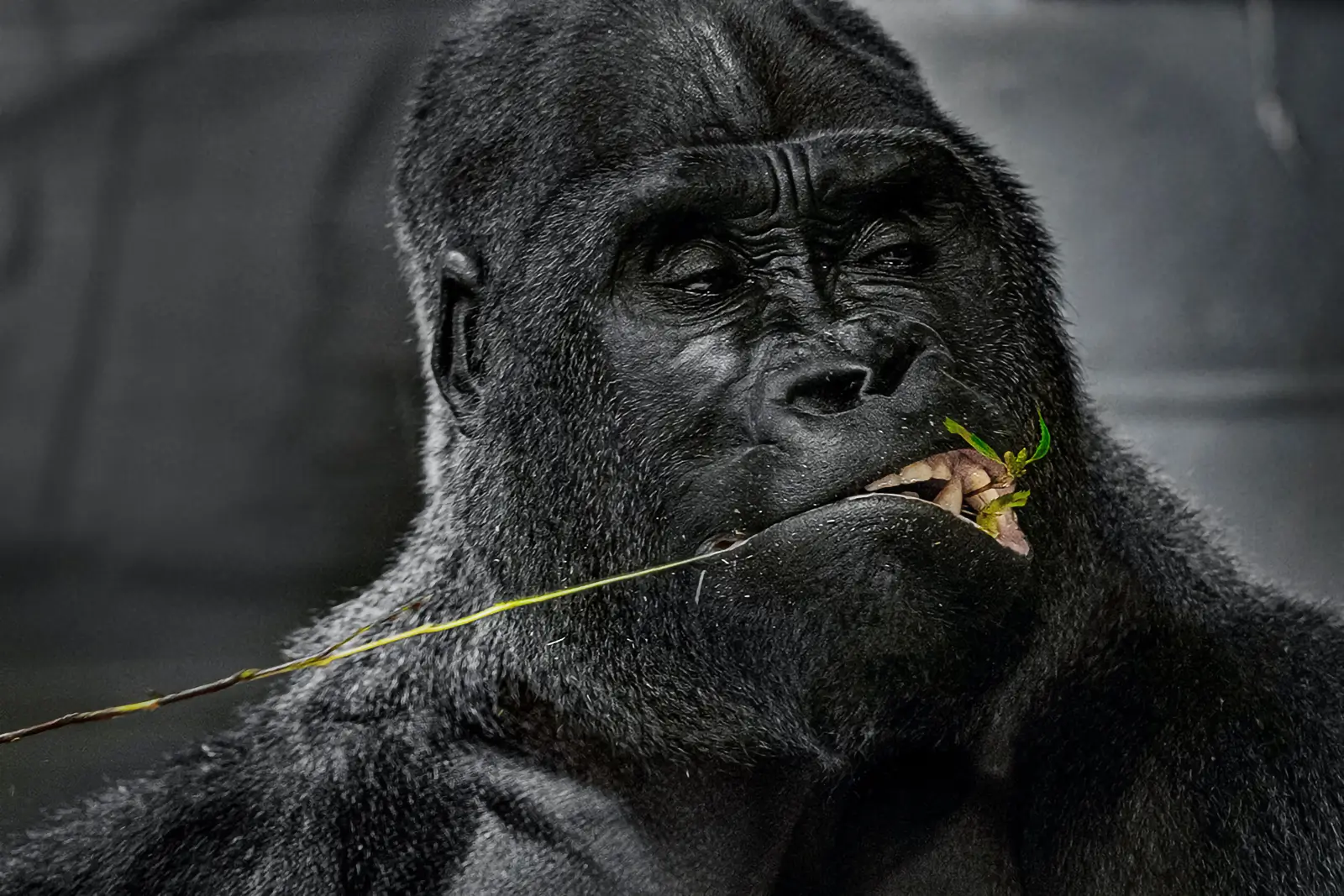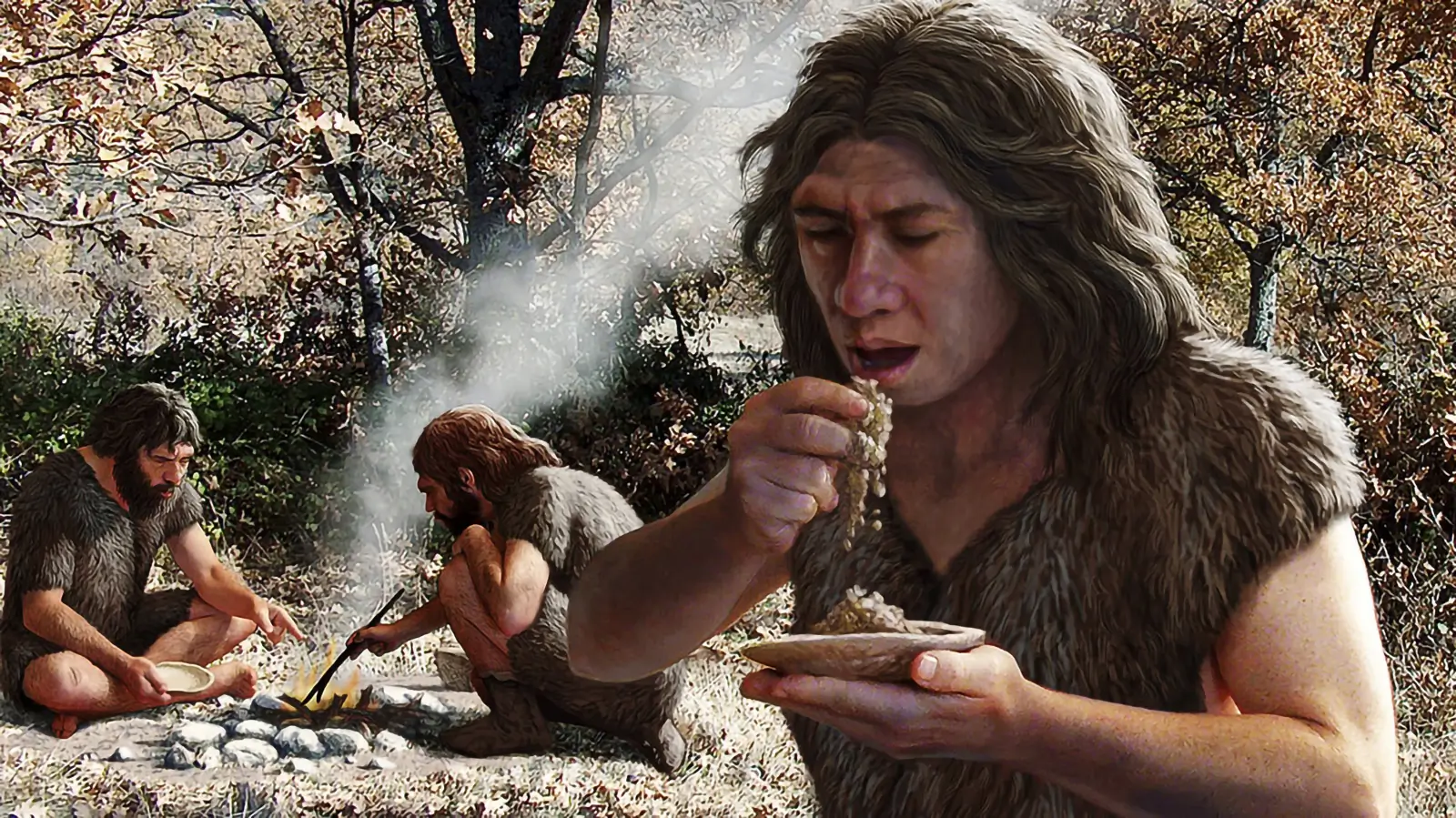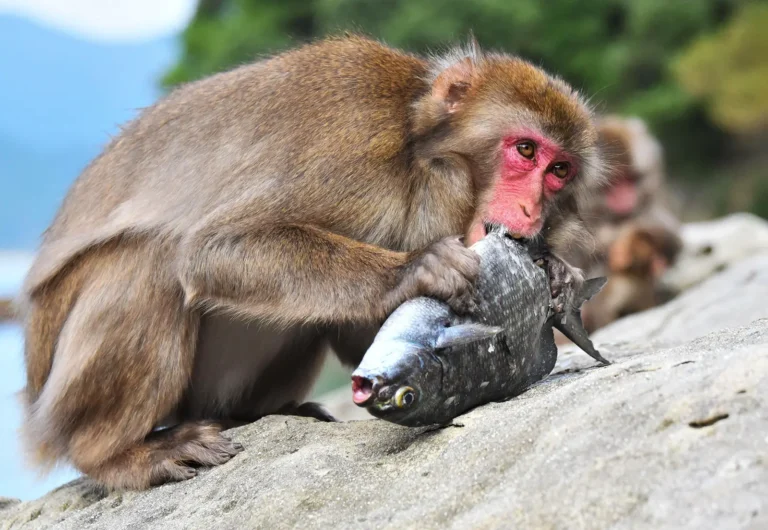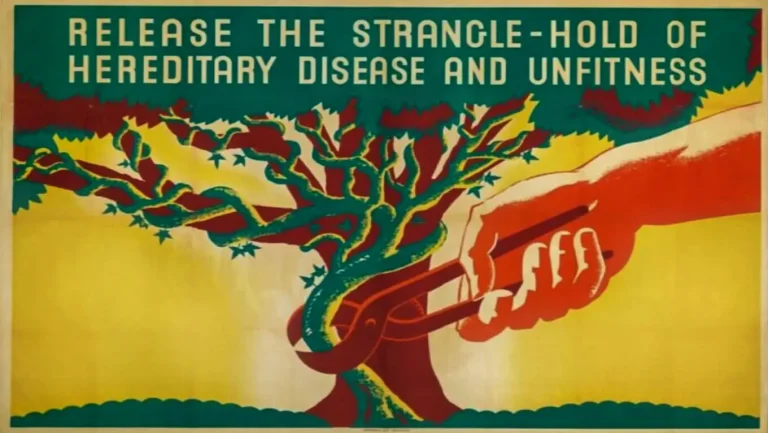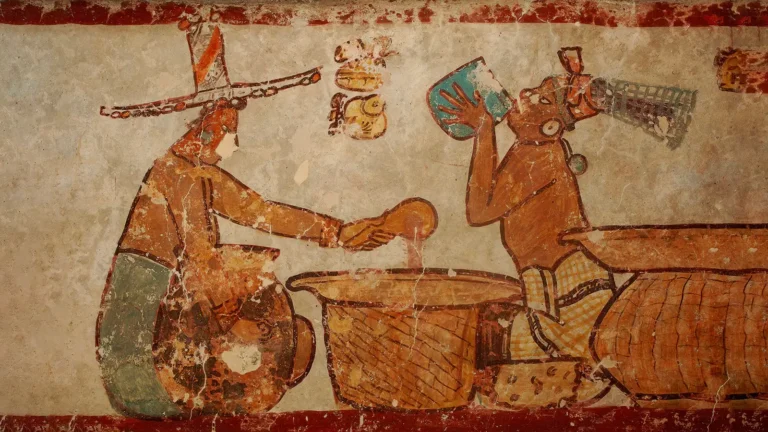Humane meat or humane myth?- The animal cognition
We are not smartest species if we scientifically measure animal cognition. The long-finned pilot whale neocortical brain part contains more neurons than our own.
Milos Pokimica
Written By: Milos Pokimica
Medically Reviewed by: Dr. Xiùying Wáng, M.D.
Updated June 9, 2023Have you ever thought about what your dog is thinking? Or how do dolphins learn to cooperate in order to catch fish? Or whether a chimp could pick up sign language? The field of science that researches the mental capacity of animals is called animal cognition, which is the study of animal minds, particularly how they think and learn. Investigate not only what animals do, but also the mental processes that underpin their behavior.
Animal cognition is a complicated subject. Until the 1960s, the term animal cognition was thought to be an oxymoron because animals were thought to be simple systems that simply responded to various stimuli in evolutionarily pre-programmed, invariant ways. However, as researchers began to closely observe animals in the laboratory and in the wild, they realized that this simplistic view failed to explain observed behavior patterns. Although there are as many definitions of animal cognition as there are researchers, most scientists agree that animal cognition, like its human counterpart, essentially involves information processing: how a subject, within its species-specific perceptual system (auditory, visual, olfactory, gustatory, somatosensory), receives data from the world it inhabits (including data from other individuals), and uses its brain to procreate using its species-specific neurobiology. Over the last few decades, the study of animal cognition has expanded to include an astonishingly diverse range of species, from insects to our closest relatives, and nonhuman primates, as well as a wide range of techniques.
The field can be subdivided into several subtopics. Researchers who specialize in comparative psychology, for example, examine a specific type of cognition, such as numerical competence, across various species, whereas researchers who specialize in cognitive ethology look at how a particular species’ evolutionary traits allow it to interact in various ways with one or more aspects of its environment. Because all studies involve various aspects of attention, categorization, memory, reasoning, and problem-solving, most researchers conduct studies that overlap a number of different subtopics, and sometimes answers to scientific questions can only be found by combining laboratory and field research. In every case, scientists conduct carefully controlled experiments or well-planned observational studies.
Today we have a line of studies but in not so distant past even the term animal cognition was denied to the point that even human-like behavior in primates was considered an instinctive triggering with no intelligence. Humans were the only intelligent species, humans were the only species on planet Earth that had a soul, and God made the image of himself in them, humans are here to rule and all animals no matter their level of intelligence are just there to be a food source. This opinion still prevails in most f the population and one of the myths that still exists is that all of this is because we somehow grow a larger brain in the stone age when we started to eat meat as an additional protein and energy source that allowed our brain to grow.
The problem with this belief is that there is no particular relationship between brain size and intelligence in the first place, and even if there is a story about animal cognition in reality is not really a story about meat consumption or humane meat consumption. It is more complicated than that.
Human adults have around 3 pounds of brain weight, dolphins have 3.5 pounds, an elephant is around 10.5, and sperm whales are around 17.2 pounds. Predators as a general rule tend to have a relatively larger brain than the animals they prey upon. Placental mammals also tend to have larger brains than marsupials such as the opossum. There is a formula known as the encephalization quotient for measuring the species’ brain size related to expectations based on its expected body size. Throughout the entire evolution of Homo sapiens, the prevailing trait was a steady increase in brain size. It is the truth that much of that size can be attributed to the corresponding increases in body size. Neanderthals, for instance, and many people do not know this used to have larger brains than modern Homo sapiens. What is more important than just the size is how the brain is wired and neuron count.
What is unique about the human brain is that the neuron count in one specific part of the brain called the cerebral cortex is much higher than in any other animal on the Earth. The human brain has 86 billion neurons if we count them all; 69 billion in the cerebellum; 16 billion in the cerebral cortex and 1 billion in the brain stem and its extensions into the core of the brain. The cerebellum orchestrates essential bodily functions and movement and is a primitive part of the brain, or let’s say an essential part. The cerebral cortex is the brain’s thick corona, the real deal. It is responsible for self-awareness, language, problem-solving, sophisticated mental talents, and abstract thought. If we want to measure the intelligence of the species, then we need to count neurons in the cerebral cortex. That is it. It is that simple. For example, the elephant brain is three times the size of our own and has 251 billion neurons in its cerebellum, which is needed to manage its massive trunk, but only 5.6 billion in its cortex. Also to be clear an elephant is considered to be a highly intelligent species. If we look at the great apes, we are the winner. We have 16 billion neurons in our cortex, but I only was referring to great apes. Homo sapiens appear to have the most significant number of cortical neurons of all species on Earth.
Oh, wait. I just lied. We are not the smartest ones. The long-finned pilot whale is. His neocortical brain part contains substantially more neurons and glial cells than the neocortex of other large-brained species including humans (Mortensen et al., 2014).
We are the species that are more intelligent than any other if we only count land-based animal species, and we have arms and legs and speech so that we can build technology, but guess what, by these measurements, we are not the most intelligent species on Earth. The long-finned pilot whale is.
The highest number of neurons in the cerebral cortex is what makes species intelligent. Primates evolved a way to pack far more neurons into that area than other mammals did. The great apes are tiny compared to elephants and whales, yet their cortices are far denser. Orangutans and gorillas have 9 billion cortical neurons, and chimps have 6 billion. So by these measures, humans are 44% more intelligent than orangutans for example because we have 16 billion neurons and they have 9. So if the average IQ in humans is 100, the IQ of orangutans would be 56. Chimpanzees fall within the 35-50 range usually. Not bad at all. Even the small monkeys are very intelligent and more intelligent than their counterpart in size. When we need to think every time we need to eat, it forces the brain to develop foraging strategies. Let me give an example. In places like South Africa or India, there are a large number of urban monkeys. These wild animals came by their own will to the cities in search of food. In their view, we are just another monkey species. They are not afraid of us at all. They consider us to be non-frightening because we are slower than them and to no small extent weaker, and we have all those food laying around everywhere. For wild monkeys, it is easier to forage for food in the human environment. Stray dogs do it by sniffing food out, they use their noses, but monkeys use their brains to do the same. Because of the movies and culture average, North American is likely to think that monkeys are sweet and cute animals with whom they can have fun and are super cute when wearing human clothes. In real life, they are everything except cute. For example, they are known to roam neighborhoods in gangs. Baboon gangs run wild in parts of the world like Suburban South Africa. They travel in a flock of around 30, and all of them move following the leader but are so vast apart that it is difficult to stop them from sliding into built-up areas. They can cross walls and roofs at speed. Gangs always have a leader, and they go foraging for your stuff. Breaking and entering, aggressive behavior, and stealing. Regular thug life and it is not funny at all. They break into people’s houses to steal food, and break into cars, and they know how to open the doors or anything else in that manner. If they see you do it, they can do it too. They are very intelligent.
Let’s think about this. Small brain monkeys can see you use technology and then they can start to use it also for themselves. They learn by themselves how to open windows, how to open doors of cars and fridges and apartments, they can sneak behind your back and steal, and they can unzip zippers and so on.
They are not just self-conscious they are conscious of your way of thinking so they can put themselves in your position and predict how you are going to react so that they can manipulate you. I am not kidding. They are known to sneak behind your back and steal stuff, and they are known to lure you out.
One of them will steal in front of you and will start to run and when you go outside to chase him off other monkeys that you did not see will go in and steal stuff while you are chasing that one-off. This is not animal cognition it is full-blown cognition. And if that is not enough, they are just going to take it out of your hands physically. If you have a problem with that, then they are going to slap you right in the face. They are not afraid of us. And we can say that that is bad enough, but there is more. When they are bored, they just going to hang out around people and pleasure themselves. The deputy mayor of New Delhi died from a monkey attack. Not directly, they did not attack him, but he tripped off his balcony while trying to fight them off from his apartment. They are aggressive, and they are intelligent. According to one study (Grainger et al., 2012), baboons have no known language or anything similar but were able to separate real English words from nonsense sequences of letters accurately. If baboons have the physical capability to speak, their level of animal cognition is such that they will have a real written language because they have adequate intelligence for it because the ability to distinguish real words from non-real ones is the first step in the reading process.
Let’s compare for example species of herbivorous monkeys with carnivorous species of the approximately same size. In the documentary “Animals Like Us” filmmakers documented the kidnapping of wild dog puppies by baboons and raising them in their own baboon tribe as members or pets. Baboons and dogs have similar sizes. The clip of the series which was filmed in a garbage dump near Ta’if, Saudi Arabia, shows a male baboon dragging a puppy away from its den as it screams for its mother. Stolen dogs grow up with the baboon species, like a family member or a member of a group. They were eating with them, sleeping, and moving together. The baboons will groom and play with them, and that is important. Baboons only play with family members. The relationship seems to benefit both the dog and the baboon. Domesticated feral dogs do the same job that they have in human society, and that is to guard the territory. They keep wild dog packs away from monkeys at night while they sleep and in return, they are treated with love and care just like humans would a family pet. Note that in this situation it is important to understand that dogs had more of an equal status in the tribe, they were not pets as monkeys did not feed them. Dogs are carnivores and would eat dump rats and other small animals and meat that they can find. They would not eat fruits and vegetables and other grains and other food in the dump yard of plant origins that baboons would eat. There was no direct competition for food thus they have a common tribe in a symbiotic relationship. Now, this video made a lot of controversies. People have a hard time accepting human-like behavior in animals because of our self-image. Was there an actual familiar bond happening between the baboons and dogs, again, we will not know until there’s real and scientific research done. There is one more video featuring a baboon manhandling a puppy that popped up. A Cornell student named Luke Seitz filmed it. He was on a bird research trip in Ethiopia when he recorded a similar situation of a baboon carrying a dog around “like a pet.” He also seemingly observed this behavior over a period of days, so it was not just a fluke.
In another case in Guassa Plateau, Ethiopia primatologist Vivek Venkataraman observed a remarkable scene: wolves and monkeys casually commingling. In normal circumstances, monkeys are prey, but in this situation, wolves did not seem to have an interest in eating baboons. Baboons and especially young ones are easy prey for wolves. In fact, they appeared to do everything they could to evade any confrontation. They were ignoring each other and spending hours wandering around through the large gelada herds foraging for rodents. Because they do not compete for a primary food source and attacking the large monkey colony would result in war and bad things happening to both of them they cohabitate. Humans and wild cats had this kind of arrangement. Domestication of wild cats happened at the same time in the Middle East and Egypt. Wild cats started to spend a lot of time in human villages. There were many rats present because of the grain store accumulation after the domestication of wild plants. It was the same symbiotic relationship. We used wild cats to lower the rats count; it was beneficial to us to tolerate them. We didn’t feed them directly. Also, rats can attract other predators like snakes, and that can be deadly. Thus we tolerated wild cats, and wild cats tolerated us because we are the source of their new food abundance and in time domestication happened. Monkeys are known for adopting people too.
As a young child of just five years old, Marina Chapman was abducted. A possible reason was to ask for ransom, but when criminals did not get any, they just abandoned her in the Columbian jungle. For some five years as a child, she lived out in the wild. She says that she was taken in by a group of capuchin monkeys. These types of monkeys are known to accept young children into their fold. She learned how to forage for food by copying them. She says monkeys taught her how to do it but in any case, she survived. She returned to human civilization when she was picked up by hunters and sold to a brothel (at that point she was not able to speak the human language). She eventually managed to escape from the brothel, lived on the streets, and in the end became a slave of the mafia family.
Humane meat is a just humane myth. No matter if we are talking about chickens or pigs or any other animal. Pigs are at least as intelligent as a three-year-old human child, cows develop deep and lasting bonds with their family and friends, chickens are able to distinguish more than 100 different faces of the members of their species, and have 30 different calls to signal different frets. Animal cognition is a vast topic.
From Kanzi the bonobo to Akeakamai the dolphin. Kenzi, for example, learned more than 500 lexigrams. Even more importantly he was able to connect these lexigrams to represent the form of small sentences. In a study done back in 1993, he performed better than a human 2-year-old at responding to verbal requests.

Akeakamai and Phoenix (Wikipedia), his tank mate dolphin, were taught how to recognize words. Akeakamai was taught words that were represented by different gestures made by the hands of a human trainer. Phoenix learned by listening to words through computer-generated electronic sounds. These sounds were reproduced through an underwater speaker. Both dolphins have successfully learned individual words and eventually strings of words or sentences. Impressively, the dolphins could understand the instructions given with different grammatical structures and different word orders. They understood the difference between instructions like “Take the hoop to the ball” and “Take the ball to the hoop.” When they performed the required actions correctly, the dolphins showed that they understood the elements of the language. This is intelligence at the level of humans. Even more remarkably, the dolphins seemed to be able to collaborate creatively. Human managers asked the dolphins to come up with their own tricks together, using tandem and creating commands. The dolphins responded with a synchronized behavior of their choice, such as diving backward or squirming their tails. Militaries of the world even trained and experimented with dolphins with the idea to create soldiers out of them. Dolphins are at the level of cognition vary closely matching to humans. However, this fact is irrelevant to us.
Cognition has nothing to do with it
We are not the only intelligent species and when we look at baboons and dogs one herbivore, another carnivore the baboons are smarter by far. Moreover, the dog itself is a very smart animal. It is a great dogma in science that somehow the newly incorporated meat source equal to a couple of percent of total calories consumed in the form of bone marrow in the early hominin diet developed our big brain and that meat is essential to our intelligence and has to be an integral part of the modern diet.
At the same time, we don’t want to recognize any form of animal cognition. animal cognition is a topic that will more and more important as advances in neurosciences continue. Animal cognition is today at a scientific understanding that anthropomorphism is no longer a dogmatic term and today scientists reject such language. Today scientists involved in the field of animal cognition believe that all animals experience emotions for example. Not just that but emotions are vital for their survival. Animal cognition will in the future also play a role in our own perceptions and we will have to answer some specific questions.
Will we give human rights to some species of animals? If we did what would be the consequences? How far does animal cognition need to go before we consider an animal as a candidate for human rights? Would we consider a killing of a crow as a killing of a 7-year-old human child and if not why not? Would we stop experiments on primates? Would the Japanese stop killing and eating dolphin meat? Would be put people in jail if they torture and kill animals? What about animal species we deem as food sources?
References:
- Mortensen, H. S., Pakkenberg, B., Dam, M., Dietz, R., Sonne, C., Mikkelsen, B., & Eriksen, N. (2014). Quantitative relationships in delphinid neocortex. Frontiers in neuroanatomy, 8, 132. https://doi.org/10.3389/fnana.2014.00132
- Grainger, J., Dufau, S., Montant, M., Ziegler, J. C., & Fagot, J. (2012). Orthographic processing in baboons (Papio papio). Science (New York, N.Y.), 336(6078), 245–248. https://doi.org/10.1126/science.1218152
Related Posts
Do you have any questions about nutrition and health?
I would love to hear from you and answer them in my next post. I appreciate your input and opinion and I look forward to hearing from you soon. I also invite you to follow us on Facebook, Instagram, and Pinterest for more diet, nutrition, and health content. You can leave a comment there and connect with other health enthusiasts, share your tips and experiences, and get support and encouragement from our team and community.
I hope that this post was informative and enjoyable for you and that you are prepared to apply the insights you learned. If you found this post helpful, please share it with your friends and family who might also benefit from it. You never know who might need some guidance and support on their health journey.
– You Might Also Like –

Learn About Nutrition
Milos Pokimica is a doctor of natural medicine, clinical nutritionist, medical health and nutrition writer, and nutritional science advisor. Author of the book series Go Vegan? Review of Science, he also operates the natural health website GoVeganWay.com
Medical Disclaimer
GoVeganWay.com brings you reviews of the latest nutrition and health-related research. The information provided represents the personal opinion of the author and is not intended nor implied to be a substitute for professional medical advice, diagnosis, or treatment. The information provided is for informational purposes only and is not intended to serve as a substitute for the consultation, diagnosis, and/or medical treatment of a qualified physician or healthcare provider.NEVER DISREGARD PROFESSIONAL MEDICAL ADVICE OR DELAY SEEKING MEDICAL TREATMENT BECAUSE OF SOMETHING YOU HAVE READ ON OR ACCESSED THROUGH GoVeganWay.com
NEVER APPLY ANY LIFESTYLE CHANGES OR ANY CHANGES AT ALL AS A CONSEQUENCE OF SOMETHING YOU HAVE READ IN GoVeganWay.com BEFORE CONSULTING LICENCED MEDICAL PRACTITIONER.
In the event of a medical emergency, call a doctor or 911 immediately. GoVeganWay.com does not recommend or endorse any specific groups, organizations, tests, physicians, products, procedures, opinions, or other information that may be mentioned inside.
Editor Picks –
Milos Pokimica is a doctor of natural medicine, clinical nutritionist, medical health and nutrition writer, and nutritional science advisor. Author of the book series Go Vegan? Review of Science, he also operates the natural health website GoVeganWay.com
Latest Articles –
Plant Based News
-
Heinz Launches Tomato Ketchup Zero With No Added Sugar
on June 18, 2025
-
Dairy-Free Milk Brand Mighty Drinks Enters Administration
on June 18, 2025
-
This Homemade Vegan Naan Could Beat Your Favorite Indian Restaurant’s
on June 18, 2025
-
Beyond Meat Embracing ‘Radical Transparency’ And Clean Functional Proteins, Says CEO
on June 17, 2025
-
10 Easy Vegan Ice Cream Recipes
on June 17, 2025
-
Plant-Based Brand Vivera Launches Pre-Frozen Tofu
on June 17, 2025
-
8 Vegan Overnight Oats Recipes
on June 17, 2025
Top Health News — ScienceDaily
- Black coffee, longer life: The science behind your morning perkon June 17, 2025
Coffee might be doing more than fueling your morning routine it could be extending your life. A large-scale study by Tufts University suggests that drinking one to three cups of caffeinated coffee daily is associated with lower overall mortality, particularly from cardiovascular causes. But there s a catch: the benefits drop when sugar and saturated fats like cream are added in excess.
- The invisible killer: PM 1 pollution uncovered across Americaon June 16, 2025
A groundbreaking 25-year analysis using satellite technology has now mapped PM 1 levels across the U.S., uncovering how wildfires, vehicle emissions, and industrial byproducts have shaped the air we breathe. Although regulations have improved air quality over time, rising wildfire activity poses a growing challenge. This new dataset gives scientists and regulators a vital tool for targeting the most harmful pollutants and protecting public health.
- Only 13 % know: The one-minute self-exam that could save young men’s liveson June 16, 2025
A new survey shows most Americans wrongly think testicular cancer is an older man’s issue, despite it most commonly affecting men aged 20 40. Early detection is key but misconceptions about symptoms and screening remain widespread.
- Your brain has a hidden beat — and smarter minds sync to iton June 16, 2025
When we focus, switch tasks, or face tough mental challenges, the brain starts to sync its internal rhythms, especially in the midfrontal region. A new study has found that smarter individuals show more precise and flexible coordination of slow theta waves during key decision-making moments. Using EEG recordings and cognitive testing, researchers discovered that it s not constant brainwave synchronization that matters most, but the brain s ability to dynamically adapt its rhythms like a […]
- Scientists discover llama antibodies that shut down COVID — and its future variantson June 16, 2025
Powerful llama-derived antibodies could be the key to stopping not just current SARS viruses, but future ones too. Scientists have discovered a unique class of nanobodies that clamp the coronavirus spike protein shut at a highly conserved region, rendering it unable to infect cells. Unlike existing therapies that target mutating regions, this approach strikes at the virus s core machinery, giving it little room to evolve. Even when pushed to mutate, the virus faltered, making this a […]
- Single psilocybin trip delivers two years of depression relief for cancer patientson June 16, 2025
Psilocybin, the active ingredient in magic mushrooms, might just revolutionize how depression and anxiety are treated in cancer patients. In a groundbreaking trial, a single dose combined with therapy significantly reduced emotional suffering, and these effects often lasted over two years. As follow-up studies expand the research to multiple doses and larger samples, scientists are eyeing a possible new standard of care that merges psychedelics with psychological support.
- CRISPR-edited stem cells reveal hidden causes of autismon June 14, 2025
A team at Kobe University has created a game-changing resource for autism research: 63 mouse embryonic stem cell lines, each carrying a genetic mutation strongly associated with the disorder. By pairing classic stem cell manipulation with precise CRISPR gene editing, they ve built a standardized platform that mirrors autism-linked genetic conditions in mice. These models not only replicate autism-related traits but also expose key dysfunctions, like the brain s inability to clean up faulty […]
PubMed, #vegan-diet –
- Plant-Based Diet and Risk of Iron-deficiency Anemia. A Review of the Current Evidence and Implications for Preventive Strategieson June 17, 2025
PURPOSE OF REVIEW: This review provides a comprehensive overview of iron metabolism, emphasizing the influence of dietary patterns-particularly vegetarian and vegan diets-on iron status and associated health outcomes.
- Protein Intake and Protein Quality Patterns in New Zealand Vegan Diets: An Observational Analysis Using Dynamic Time Warpingon June 13, 2025
Background/Objectives: Inadequate intake of indispensable amino acids (IAAs) is a significant challenge in vegan diets. Since IAAs are not produced or stored over long durations in the human body, regular and balanced dietary protein consumption throughout the day is essential for metabolic function. The objective of this study is to investigate the variation in protein and IAA intake across 24 h among New Zealand vegans with time-series clustering, using Dynamic Time Warping (DTW). Methods:…
- Diet and nutrition in cardiovascular disease prevention: a scientific statement of the European Association of Preventive Cardiology and the Association of Cardiovascular Nursing & Allied Professions…on June 12, 2025
What we eat is a cornerstone of cardiovascular disease (CVD) prevention, but health professionals may not have a clear understanding of the current evidence-based research to underpin eating habits and recommendations. This study aims to appraise existing evidence-based research on the importance of diet on CVD risk biomarkers, specifically, the effects of dietary patterns, specific foods, and constituents including vitamins/minerals and plant-derived bioactive compounds on CVD risk. […]
- Synergistic Effects of Steam Impinged Microwave-Vacuum Blanching on the Textural Behavior of Vegan Pattieson June 11, 2025
The present study was carried out to understand the effect of the process variables of the combined microwave-vacuum-steam blanching process on the textural behavior of vegan patties. This novel blanching technique was systematically evaluated to optimize parameters, including microwave power density (3.8 W/g), steam duration (3 s), pea-to-potato mash ratio (0.252), patty thickness (0.866 cm), and microwave irradiation time (133 s). Fourier transform infrared (FTIR) spectroscopy was employed […]
- Plant-based diet and risk of osteoporosis: A systematic review and meta-analysison June 10, 2025
CONCLUSIONS: This systematic review and meta-analysis indicate that adherence to plant-based diet may be associated with an elevated risk of osteoporosis, particularly at the lumbar spine, among individuals following a vegan diet or following a plant-based diet for ≥10 y. However, the heterogeneity observed across studies highlights the need for well-designed prospective studies in future, to clarify this relationship.
Random Posts –
Featured Posts –

Latest from PubMed, #plant-based diet –
- Plant-based milk alternatives: can they replace the iodine from UK cow’s milk?by Katie Nicol on June 18, 2025
Current food systems pose risks to both population and environmental health. Reducing the intake of animal-based foods, such as dairy products, and increasing consumption of plant-based foods align with priorities for addressing climate change and promoting overall health. Plant-based alternatives to cow’s milk can be readily substituted for cow’s milk without altering meal patterns and food habits, making them a popular choice among those reducing animal-product consumption. However,…
- Diet quality, unprocessed plant-based foods, and vascular function in adults with CKD: Secondary analysis of a pilot randomized clinical trialby Luis Perez on June 18, 2025
CONCLUSION: Despite overall low diet quality, higher consumption of unprocessed, plant-based energy and nutrients was associated with lower arterial stiffness. Future studies are needed to explore these associations in larger cohorts with CKD and the effects of diet quality interventions.
- Biaxial testing and sensory texture evaluation of plant-based and animal deli meatby Skyler R St Pierre on June 18, 2025
Animal agriculture is one of the largest contributors to global carbon emissions. Plant-based meats offer a sustainable alternative to animal meat; yet, people are reluctant to switch their diets and spending habits, in large part due to the taste and texture of plant-based meats. Deli meat is a convenient form of protein commonly used in sandwiches, yet little is known about its material or sensory properties. Here we performed biaxial testing with multiple different stretch ratios of four…
- Evidence-based review of the nutritional treatment of obesity and metabolic dysfunction-associated steatotic liver disease in children and adolescentsby Sara Karjoo on June 17, 2025
The growing pediatric obesity epidemic has paralleled the surge in metabolic dysfunction-associated steatotic liver disease (MASLD) and metabolic dysfunction-associated steatohepatitis. It develops due to nutritional imbalances, microbiome dysbiosis, gene regulation, hormonal changes, and environmental factors like food deserts, low activity level, and an unhealthy lifestyle. The prevalence of MASLD and obesity is rising every year. Lifestyle changes remain the mainstay treatment for obesity […]
- Culinary Medicine for Chronic Kidney Diseaseby Rebecca Schlueter on June 17, 2025
Culinary medicine is an emerging, evidence-based discipline that integrates medical and nutritional care with practical culinary strategies to mitigate the risk and progression of chronic kidney disease (CKD). Culinary Medicine, which falls under the broader movement of “Food is Medicine”, supports culturally relevant, person-centered health care goals. It addresses strategies to overcome the health risks of the standard American diet, high in animal protein, salt, sugar, and ultra-processed…
- Plant-Based Diet and Risk of Iron-deficiency Anemia. A Review of the Current Evidence and Implications for Preventive Strategiesby Miguel López-Moreno on June 17, 2025
PURPOSE OF REVIEW: This review provides a comprehensive overview of iron metabolism, emphasizing the influence of dietary patterns-particularly vegetarian and vegan diets-on iron status and associated health outcomes.
